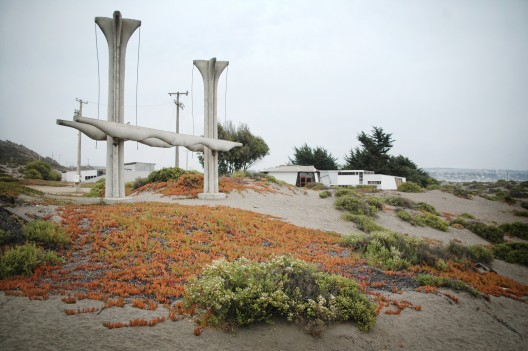
The Open City of Ritoque, inhabited landscape
Halfway between Concón and Ritoque, the Open City suddenly emerges from the dunes on a beach of turbulent waters and a mountain overgrown with vegetation.
As if suspended in time and isolated from external events, the Open City protects itself, paradoxically only behind a metal fence. It is a day of celebration and the families are gathered at home with the doors wide open. We step inside.
Amereida. Amereida is a city. It also shares its name with a poem. The name comes from the union of Eneida with América. Its origin, the entwining of Architecture and Poetry. After the publication of the poem in 1965, for many people the word came to mean “a way of living, working and studying”.
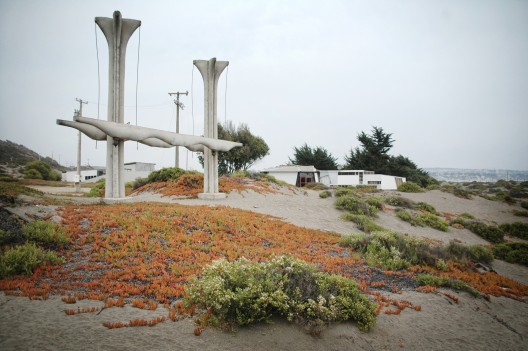
“Enlightened by this word we find the whereabouts and tasks of the Design and Architecture School in the Catholic University of Valparaíso, and especially those of the Open City and our Cultural Board. Such enlightenment brings a deep source of freedom and with time, the possibility of reaching new goals that allow us to carry out the tasks that we consider most important for building our world. Amereida is, after all, a vision. A vision that holds onto the highest and deepest virtues of humanity, inviting with creative peace the opportunity to re-envision the true essence of American identity. A vision that thrives to reach every field where craftsmanship can develop into art and rise up to its apex” [Amereida Cooperative].
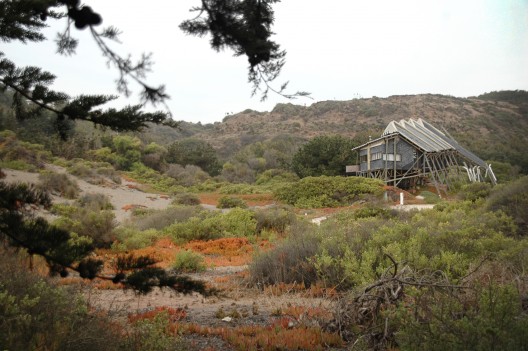
The birth of this magical place and of this strange and yet familiar way of living, was described in this manner by its pioneers. The Open City is, therefore, a field for experimental architecture, an initiative by the teachers and alumni at the Design and Architecture School in the Catholic University of Valparaíso which created this Co-operative. And, since acquiring 300 hectares of terrain north of the Aconcagua River in 1971, it has been constructing an architecture with no precedent. An existential Laboratory, surrealistic, symbolic, hybrid, wilful.
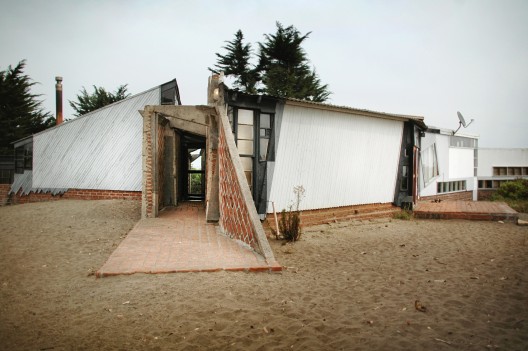
“Poetry speaks, Architecture builds. A City that’s not a City. No typological ideas, no references or images from the past (classical or folkloric), no planning or machine-like allegories. No epics or grand rhetorics. No streets, no plots. An unmatched feeling of modernism. […] Lead by Alberto Cruz Covarrubias and Godofredo Lommi architects, sculptors, poets and painters work […] with the essential ideal of joining life, study and work in one single entity […]. [Martín Lisnovsky]
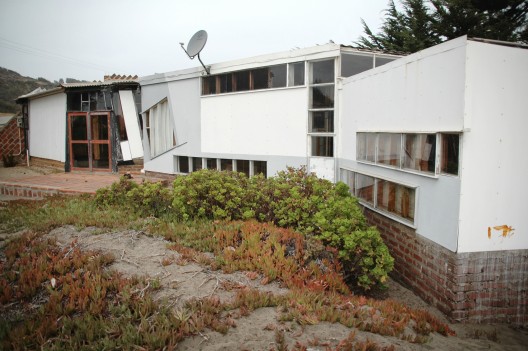
This union couldn’t be conceived without the landscape that surrounds and supports it. In such a union, architecture and art combine in inhabited construction and inhabited landscape throughout the sculptoric and allegoric use of the area. A broad coastline spotted with wetlands and dunes and sheltered by hills, is transformed into the first draft of the city. In its architecture we are able to read the changing landscape of dunes, moving the structures with every breeze, crystallising them in time and space when a plant roots in them blocking the sand moved by the breeze. Soon enough, in this haven or new environment, other plants start to root. In the same way the Open City seems to emerge, almost ephemerally anchored with mainstays in a landscape that writes poetry for it.
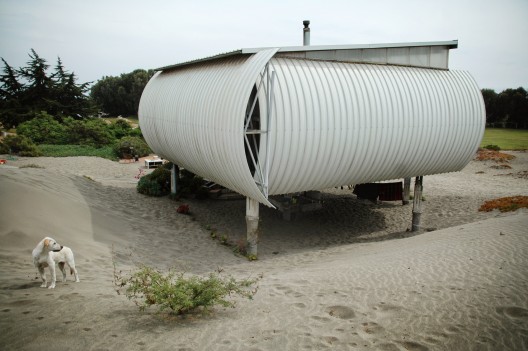
The Territory thus becomes an extension of housing, enhancing the idea of Community. The city, its planning (or non-planning), its architecture and even its almost familiar social relations, are born from the reading of environmental and spatial conditions while strengthening them. Almost like an existentialist work, architecture fades under a trail covering sand in a song for growth, old age, death and rebirth in pursuit of constant creation. In the same way as every living being is an original individual but also originates from a group, each house in the open city is unique and part of the community.
The usual image of an architect’s new works, lifelessly lacking any wrinkle of time or any everyday elements. In the open city, walls being repaired stand alongside buckets of tools and construction materials tangled up with indigenous vegetation, forming dynamic, changing sculptures. Toys spread across the floor, clothes hanging…
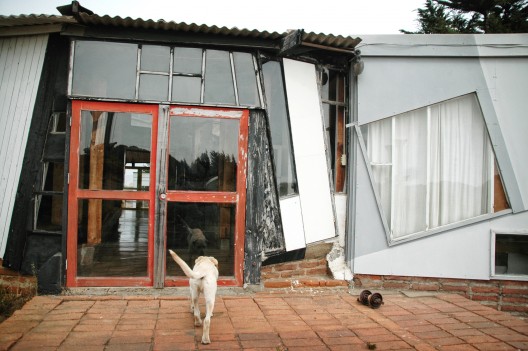
Since the birth of the city in the 70s, many other constructions have emerged from the dunes and fallen by the blows of gales. Its buildings, erected with “whatever materials are at hand” and “relying only on our own strengths and that of our friends”, are the materialisation of practical architecture, still connected with the School of Architecture.
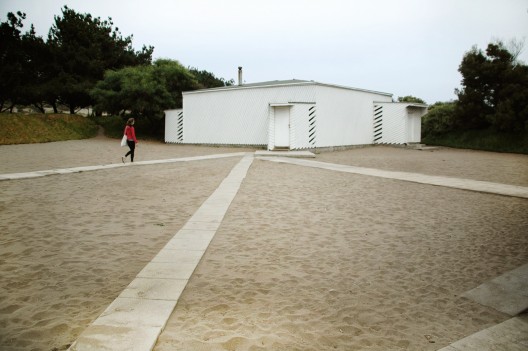
Hundreds of visitors have come to the Open City, offering words written increased notebook pages. Many works are now part of its landscape: the “Anfiteatro”, the “Capilla”, the “Mesa del Entreacto”, the “Faubourg”, the “Palacio del Alba y del Ocaso”, the “Jardín Cenotafio de Bo”, the “Torres de Agua”, the “Ágora de los Huéspedes”, the “Pozo”, the “Cementerio”, the “Ágora de Tronquoy”; the “Vestal del Signo” and “Jardín”; the “Hospederías de la Entrada”, “del Taller de Obras”, “de la Alcoba”, the “Rosa de los Vientos” (Celdas), “de las Máquinas y del Banquete”; the “Casa de los Nombres”, the “Galería de la Puntilla”, the “Taller del Escultor”, the “Cubícula del Poeta”, the “Taller de Prototipos”, the “Hospedería del Errante”, “de los Diseños”, the “Pie de Cruz”, “del Confín”; the “Palacio Viejo”, the “Sala de Música”, the “Cubícula Locanda”…
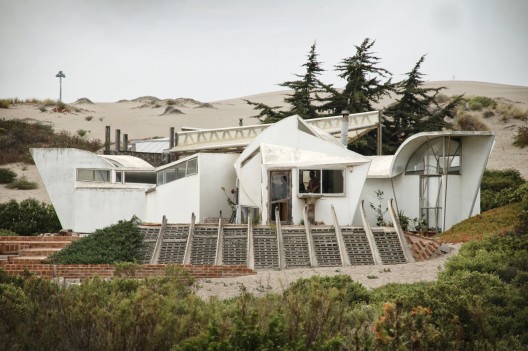
Nothing is composed, nor pretends to be. Here there is no room for the idea of architecture as the expression of the architect’s ego, lost in complex language and far from people’s lives, or as the idealisation of an unreal image. The comprehension of architecture, as read and recognised in the same way as its landscape, appeals to each and every one of the visitors’ senses.
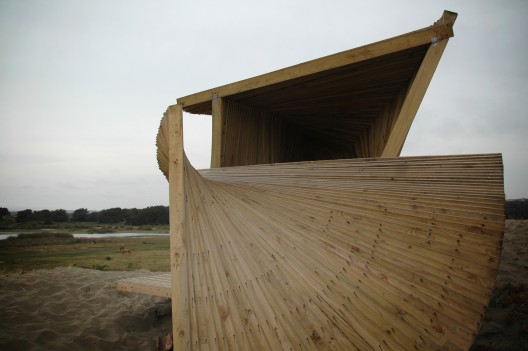
“We relied on the idea that the architects who build the houses for everyone here end up developing a deep sense of community.”
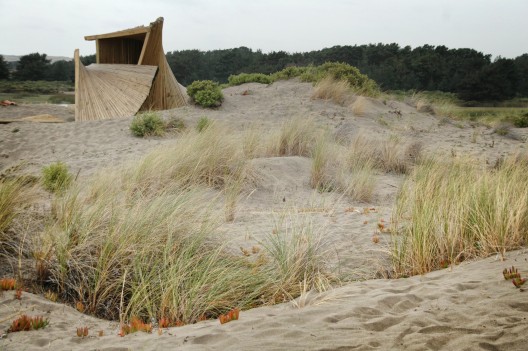
In this way, walking through the city´s paths, we distance ourselves from the idea of work as a projection of one’s creative impetus that obstructs the real aim of a building: to be inhabited. We leave Amereida behind, the journey through living spaces, its biodegradable, changing, alterable architecture that ages like the living and disappears like the dead. An architecture that buries its creators under the sands from under which they were born.
Written by: Ana Asensio Rodríguez / Translated by: Jacinto Castillo & Caitlin Mayall / Photography: Ana AsensioRodríguez / Originally written in spanish for Plataforma Arquitectura / Citation: Asensio, Ana “Ciudad Abierta de Ritoque, paisaje habitado / 44 años después” 12 May 2013
Read it / Share it, also in Spanish: http://wp.me/p46Ijl-1Y
